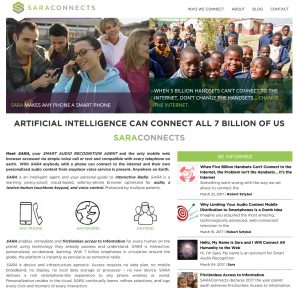The most impactful marketing campaigns have always been content driven, and content marketing has never been so affordable and accessible to small enterprises as it is today. The means and methods to reach the marketplace have evolved dramatically over the past two decades thanks in large measure to the Internet and proliferation of technology and tech-literacy to the population. But while tools and tactics have changed enormously, the fundamentals behind successful marketing have not.
Turn-of-the-Century Content Marketing
IBM had invested considerable funds to support a major print advertising campaign for the ThinkPad’s original launch, but long before then we understood that to rapidly raise awareness and interest in the fledgling brand required a content marketing strategy. To implement it required effective use and manipulation of print and broadcast media outlets – at that time the only mass communication channels available. We knew that no amount of advertising could match the voice of the world’s most respected journalists and analysts and their published and widely circulated reviews and opinions. It was my challenge to harness their vast influence to reach to promote ThinkPad quickly and loudly. You can read more about that in the book ThinkPad, A Different Shade of Blue.
Before ThinkPad, IBM typically withheld any press exposure to a new product until launch to ensure the distribution channels had received production inventory. Conventional wisdom was that demand should not be created until the channel was capable of fulfilling orders. The side-effect of this thinking was that publicity around new products would lag launch by days, weeks, or months depending on the publication; as a result, IBM never saw much bump in demand from industry media, and left it to the sales forces to do the heavy lifting of awareness-generation one customer at a time.

Cover features were timed to street on launch day
This outmoded thinking changed with ThinkPad. We catered to the media and courted them well before products were in final form. I teased journalists with prototypes 3-6 months in advance of launch; the allure of these early previews to our next-big-thing was ever enticing to reporters who are always looking for their next story. As a result of this strategy, articles about our new devices were timed to always street the same day and week as our launch, and not only as a footnote but as the publication cover feature. We were driven by three critical marketing fundamentals:
- Respect the editorial calendar, the journalists will respect you. We were beholden to the media, as we had no direct path to communicate to mass audiences as we do today. So we tracked the media outlets and built our meetings and reveals around their editorial calendars. In those days, monthly glossies like PC Magazine and PC World typically required 3-4 months for editorial and layout of an issue; weeklies needed at least a week, sometime 2-3 if we wanted to ensure a decent review and not just a “First Looks” blurb. To accommodate these extended calendars we would supply hand-built demonstration machines that in many cases were not even painted or with software loaded. Often times these working models were personally couriered by a random employee from our development center in Yamato Japan, who flew 14-16 hours from Narita to JFK, handed the device to another awaiting IBMer at the airport, and stepped back onto the next available jet back to Japan. My team would receive the device and bandage, paint, polish or otherwise disguise whatever blemishes we could; then we installed a largely untested disk image and shared the raw devices to the media.
- Give them compelling copy, not just the machine. Our network of journalists, editors and reviewers was top notch, but it was difficult to ensure that each one really grasped the very special products we were sharing with them and were not overwhelmed. To improve our odds, an essential element of our dissemination of prototypes was the detailed Reviewer’s Guide that I composed for each device. Aside from the usual features and specifications, these guides detailed benefits, offered use cases and proposed paradigm-shifting applications for the many advanced technologies we were packaging into our machines. I knew we were controlling the message with some degree of success as I routinely noted my copy being directly lifted and reused (without attribution) in the reviews! But this was as intended.
- Volunteer your warts and you won’t get dinged. Journalists and reviewers are not shy about revealing failures and shortcomings; magazines of the day were littered with critiques of competitive devices from the likes of Toshiba, Compaq, HP and Apple. You’d imagine that the risk of a ding or criticism against the brand increases exponentially with a scotch-tape and hand-painted prototype still in alpha, and it does. But the Reviewer’s Guides also very prominently volunteered all known warts that we could identify. We might have even listed additional warts for features already corrected. The reviewers understood that they were working with prototypes; by alerting them to these defects, they knew to ignore, not expose them to the public. The reviewers respected our candor and care, and this mutual respect led to a stronger relationship, as we knew we could continue to entrust future alpha and beta devices to them.
Content Marketing Today
It is widely understood that the Internet and social media have changed how enterprises market and reach directly to their audiences. Conventional journalists’ and analysts’ heft in swaying market opinions has been somewhat diluted as bloggers and online tastemakers have emerged as the new influencers. Yet the nurturing and cultivation of influencers for good reviews remains old-school. Print and broadcast media have been reduced in influence but the same lessons of print media apply to the web and social and should be heeded. Today the editorial calendars are blurred by myriad bloggers with varying motivations and schedules; compelling content gets posted directly and promoted through social channels at lightning speed, and deleting publicly tweeted warts rather than confronting them and the host of frustrated bloggers happens at a company’s own peril.

“Above-the-fold” design in classical context
Another lesson from print media goes to effective website and blog design. A common design term from the newspaper business applies directly: critical content should appear “above the fold”. At the newsstand, newspapers and periodicals are all displayed with the most eye-grabbing images and content top-and-center to attract interest. News editors always layout the top section of their front page for maximum impact. This same concept of “above the fold” applies to website design. You want your messaging immediately visible, not buried beneath nonsense.

“Above-the-fold” applied to web design
With the design of the SaraConnects website we contended with this challenge in a unique way. We have two distinct applications with completely different revenue models and beneficiaries that we needed to promote equally. We were also challenged to educate visitors on the intrinsic value of our technology to both developed and developing markets around the world – two arguably very different sets of applications to attempt to communicate in tandem. We wanted to ensure that every visitor would immediately see some content of appeal to their particular interest whether they arrived to learn about emerging market initiatives in health and education or first world applications to disrupt commercial radio. To accomplish this our designer proposed a solution that not only allowed both applications to share hero placement at top of page; he also recommended that our blog be featured more prominently than one typically finds on a company homepage. This treatment makes our content highly visible, easily discoverable, and of newsworthy impact. It also provides a style guide for extending SaraConnects branding to all social media outlets and extensions.
Could you use some help with your digital and content marketing? Contact us!






